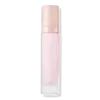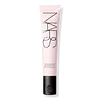What's inside
What's inside
 Key Ingredients
Key Ingredients

 Benefits
Benefits

 Concerns
Concerns

 Ingredients Side-by-side
Ingredients Side-by-side

Water
Skin ConditioningDimethicone
EmollientErythritol
HumectantPentylene Glycol
Skin ConditioningGlycerin
HumectantCetyl PEG/PPG-10/1 Dimethicone
EmulsifyingPolymethylsilsesquioxane
Pentaerythrityl Tetraisostearate
EmollientIsododecane
EmollientTrimethylsiloxysilicate
EmollientNylon-12
Polymethyl Methacrylate
Sodium Chloride
MaskingPhenoxyethanol
PreservativeHydroxyacetophenone
AntioxidantMagnesium Sulfate
Polysilicone-11
Disteardimonium Hectorite
StabilisingSodium Hyaluronate
HumectantTocopheryl Acetate
AntioxidantPropylene Carbonate
SolventParfum
MaskingBiosaccharide Gum-4
Skin ConditioningLaureth-12
EmulsifyingVitis Vinifera Seed Oil
EmollientTriethoxycaprylylsilane
CI 77007
Cosmetic ColorantCI 15850
Cosmetic ColorantWater, Dimethicone, Erythritol, Pentylene Glycol, Glycerin, Cetyl PEG/PPG-10/1 Dimethicone, Polymethylsilsesquioxane, Pentaerythrityl Tetraisostearate, Isododecane, Trimethylsiloxysilicate, Nylon-12, Polymethyl Methacrylate, Sodium Chloride, Phenoxyethanol, Hydroxyacetophenone, Magnesium Sulfate, Polysilicone-11, Disteardimonium Hectorite, Sodium Hyaluronate, Tocopheryl Acetate, Propylene Carbonate, Parfum, Biosaccharide Gum-4, Laureth-12, Vitis Vinifera Seed Oil, Triethoxycaprylylsilane, CI 77007, CI 15850
Butyl Methoxydibenzoylmethane 2%
UV AbsorberHomosalate 6%
Skin ConditioningEthylhexyl Salicylate 5%
UV AbsorberOctocrylene 1.6%
UV AbsorberWater
Skin ConditioningCaprylyl Methicone
Skin ConditioningDipropylene Glycol
HumectantPropanediol
SolventDimethicone
EmollientButyloctyl Salicylate
Skin ConditioningLactobacillus Ferment
Skin ConditioningIsododecane
EmollientAmmonium Acryloyldimethyltaurate/Vp Copolymer
Trisiloxane
Skin ConditioningPolysorbate 60
EmulsifyingTrimethylsiloxysilicate
EmollientDextrin Palmitate
EmulsifyingPhenoxyethanol
PreservativeC14-22 Alcohols
Emulsion StabilisingHydroxyethyl Acrylate/Sodium Acryloyldimethyl Taurate Copolymer
Emulsion StabilisingHydrolyzed Wheat Protein/Pvp Crosspolymer
Panthenol
Skin ConditioningParfum
MaskingEvodia Rutaecarpa Fruit Extract
Skin ConditioningDibutyl Ethylhexanoyl Glutamide
Skin ConditioningDibutyl Lauroyl Glutamide
Skin ConditioningDisodium EDTA
C12-20 Alkyl Glucoside
EmulsifyingDipotassium Glycyrrhizate
HumectantTocopheryl Acetate
AntioxidantSodium Hyaluronate
HumectantButylene Glycol
HumectantPentylene Glycol
Skin ConditioningTin Oxide
AbrasivePotassium Sorbate
PreservativeHydroxyphenyl Propamidobenzoic Acid
Skin ConditioningEthylhexylglycerin
Skin ConditioningAscorbyl Palmitate
AntioxidantMica
Cosmetic ColorantTitanium Dioxide
Cosmetic ColorantCI 14700
Cosmetic ColorantCI 19140
Cosmetic ColorantButyl Methoxydibenzoylmethane 2%, Homosalate 6%, Ethylhexyl Salicylate 5%, Octocrylene 1.6%, Water, Caprylyl Methicone, Dipropylene Glycol, Propanediol, Dimethicone, Butyloctyl Salicylate, Lactobacillus Ferment, Isododecane, Ammonium Acryloyldimethyltaurate/Vp Copolymer, Trisiloxane, Polysorbate 60, Trimethylsiloxysilicate, Dextrin Palmitate, Phenoxyethanol, C14-22 Alcohols, Hydroxyethyl Acrylate/Sodium Acryloyldimethyl Taurate Copolymer, Hydrolyzed Wheat Protein/Pvp Crosspolymer, Panthenol, Parfum, Evodia Rutaecarpa Fruit Extract, Dibutyl Ethylhexanoyl Glutamide, Dibutyl Lauroyl Glutamide, Disodium EDTA, C12-20 Alkyl Glucoside, Dipotassium Glycyrrhizate, Tocopheryl Acetate, Sodium Hyaluronate, Butylene Glycol, Pentylene Glycol, Tin Oxide, Potassium Sorbate, Hydroxyphenyl Propamidobenzoic Acid, Ethylhexylglycerin, Ascorbyl Palmitate, Mica, Titanium Dioxide, CI 14700, CI 19140
Ingredients Explained
These ingredients are found in both products.
Ingredients higher up in an ingredient list are typically present in a larger amount.
Dimethicone is a type of synthetic silicone created from natural materials such as quartz.
What it does:
Dimethicone comes in different viscosities:
Depending on the viscosity, dimethicone has different properties.
Ingredients lists don't always show which type is used, so we recommend reaching out to the brand if you have questions about the viscosity.
This ingredient is unlikely to cause irritation because it does not get absorbed into skin. However, people with silicone allergies should be careful about using this ingredient.
Note: Dimethicone may contribute to pilling. This is because it is not oil or water soluble, so pilling may occur when layered with products. When mixed with heavy oils in a formula, the outcome is also quite greasy.
Learn more about DimethiconeIsododecane is a fragrance, emollient, and solvent.
As an emollient, it helps your skin stay soft and hydrated. Emollients help trap moisture into your skin.
Isododecane's role as a solvent makes it a great texture enhancer. It spreads smoothly on skin and does not leave a sticky feeling behind. Isododecane also helps prevent color transfer in makeup products.
Isododecane is not absorbed into skin.
Learn more about IsododecaneParfum is a catch-all term for an ingredient or more that is used to give a scent to products.
Also called "fragrance", this ingredient can be a blend of hundreds of chemicals or plant oils. This means every product with "fragrance" or "parfum" in the ingredients list is a different mixture.
For instance, Habanolide is a proprietary trade name for a specific aroma chemical. When used as a fragrance ingredient in cosmetics, most aroma chemicals fall under the broad labeling category of “FRAGRANCE” or “PARFUM” according to EU and US regulations.
The term 'parfum' or 'fragrance' is not regulated in many countries. In many cases, it is up to the brand to define this term.
For instance, many brands choose to label themselves as "fragrance-free" because they are not using synthetic fragrances. However, their products may still contain ingredients such as essential oils that are considered a fragrance by INCI standards.
One example is Calendula flower extract. Calendula is an essential oil that still imparts a scent or 'fragrance'.
Depending on the blend, the ingredients in the mixture can cause allergies and sensitivities on the skin. Some ingredients that are known EU allergens include linalool and citronellol.
Parfum can also be used to mask or cover an unpleasant scent.
The bottom line is: not all fragrances/parfum/ingredients are created equally. If you are worried about fragrances, we recommend taking a closer look at an ingredient. And of course, we always recommend speaking with a professional.
Learn more about ParfumPentylene glycol is typically used within a product to thicken it. It also adds a smooth, soft, and moisturizing feel to the product. It is naturally found in plants such as sugar beets.
The hydrophilic trait of Pentylene Glycol makes it a humectant. As a humectant, Pentylene Glycol helps draw moisture from the air to your skin. This can help keep your skin hydrated.
This property also makes Pentylene Glycol a great texture enhancer. It can also help thicken or stabilize a product.
Pentylene Glycol also acts as a mild preservative and helps to keep a product microbe-free.
Some people may experience mild eye and skin irritation from Pentylene Glycol. We always recommend speaking with a professional about using this ingredient in your routine.
Pentylene Glycol has a low molecular weight and is part of the 1,2-glycol family.
Learn more about Pentylene GlycolPhenoxyethanol is a preservative that has germicide, antimicrobial, and aromatic properties. Studies show that phenoxyethanol can prevent microbial growth. By itself, it has a scent that is similar to that of a rose.
It's often used in formulations along with Caprylyl Glycol to preserve the shelf life of products.
Sodium Hyaluronate is hyaluronic acid's salt form. It is commonly derived from the sodium salt of hyaluronic acid.
Like hyaluronic acid, it is great at holding water and acts as a humectant. This makes it a great skin hydrating ingredient.
Sodium Hyaluronate is naturally occurring in our bodies and is mostly found in eye fluid and joints.
These are some other common types of Hyaluronic Acid:
Learn more about Sodium HyaluronateTocopheryl Acetate is AKA Vitamin E. It is an antioxidant and protects your skin from free radicals. Free radicals damage the skin by breaking down collagen.
One study found using Tocopheryl Acetate with Vitamin C decreased the number of sunburned cells.
Tocopheryl Acetate is commonly found in both skincare and dietary supplements.
Learn more about Tocopheryl AcetateThis silicone is an emollient. Emollients create a thin film on the skin to prevent moisture from escaping.
It is not soluble in water and helps increase water-resistance in products.
According to a manufacturer, it can blend seamlessly with silicone oils, such as Cyclopentasiloxane.
Learn more about TrimethylsiloxysilicateWater. It's the most common cosmetic ingredient of all. You'll usually see it at the top of ingredient lists, meaning that it makes up the largest part of the product.
So why is it so popular? Water most often acts as a solvent - this means that it helps dissolve other ingredients into the formulation.
You'll also recognize water as that liquid we all need to stay alive. If you see this, drink a glass of water. Stay hydrated!
Learn more about Water